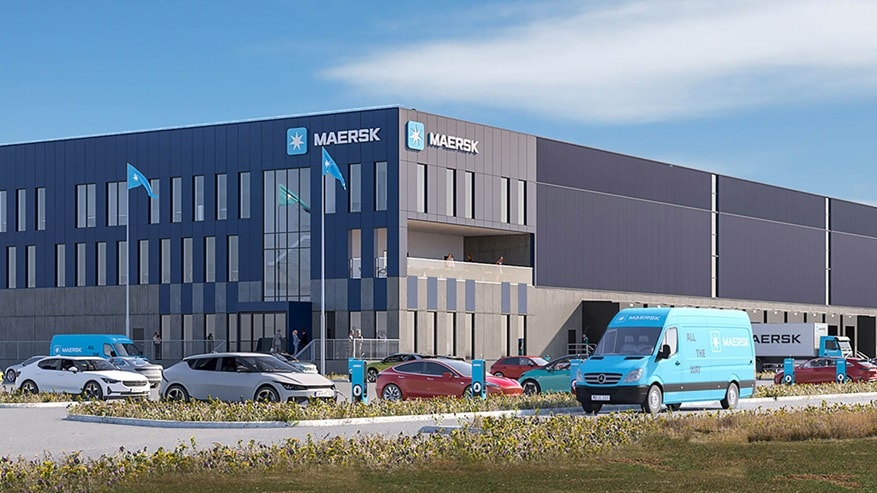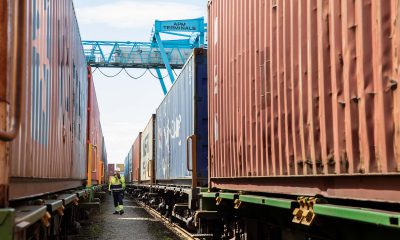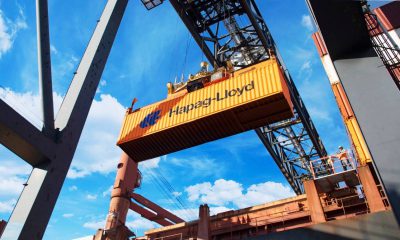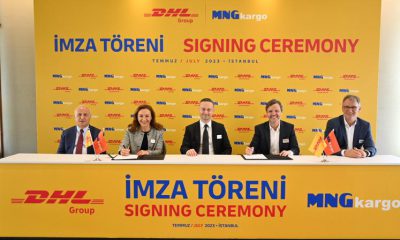A.P. Moller – Maersk announces the construction of the company’s first low GHG emissions contract logistics warehouse in Denmark realised in partnership with Taulov Dry Port, which is a Danish joint venture between ADP A/S and PFA Pension. The warehouse is part of Maersk’s strategy to accelerate the delivery of fulfilment capability in Denmark.
“We are pleased to announce our first green contract logistics warehouse in Denmark. Many of our customers are looking for long-term partners that have such capabilities to reduce their entire climate footprint. The Taulov facility also has a strategic position in Europe and will be a key asset to serve our customers as a deconsolidation point and add value by optimizing transport modes with its port, rail and road links creating flexibility in flows by accelerating or slowing down supply chains.” said Birna Odefors, Area Managing Director, Nordics, A.P. Moller – Maersk.
The green contract logistics warehouse is aiming to be built to BREEAM Excellent standards with zero direct emissions from operations in full accordance with Maersk´s overall goal to decarbonise its entire operations by 2040. The 40.000 sqm facility has an option for an additional 40.000 sqm and is scheduled to become operational in 2024. It will be located in Taulov in South Denmark underpinning Maersk´s strong logistics footprint in Northern Europe and responding to rising market demands.
“The typical customer needs in the fields of contract logistics are to support their inventory control, cost optimisation, extended visibility, speed to market and a consistent, sustainable flow of goods to reinforce their supply chain resilience. As consequence, many of our customers are looking to build upon their offerings to their markets and require logistics partners with asset control to support their growth strategies, by establishing long-term sustainable contract logistics solutions and not just to cover the short-term demand arising due to COVID-19.” added Birna Odefors.
Maersk’s emissions targets entail that at least 90 pct. of its global cold chain and contract logistics operations will be certified as green by 2030.
Taulov Dry Port owns the commercial land and the logistic premises. Since Taulov Dry Port was established in 2017, the joint-venture partnership between ADP A/S and PFA Pension has been based on ambitions of being innovative in the development modern storage and logistics buildings and leading sustainable transport infrastructure, which among other things includes the construction of Denmark’s largest hydrogen refueling station. The parties have reached an agreement with Maersk for 12 years lease with the option to both extend and expand. The warehouse will be built by Taulov Dry Port based on Maersk’s specifications and design.
The agreement with Maersk to build the first logistics warehouse with zero emission from fuel and energy is another milestone for the development of Taulov Dry Port and is an important step in the long-term partnership.
“We are proud to be part of Maersk´s sustainable value chain supporting their customers with visionary sustainable logistics solutions. Taulov Dry Port is a European multimodal logistic hub and key player in the green transition of the logistic sector due to the sustainable infrastructure with the Port of Fredericia, the motorway and railway network. Soon the area will also be ready for the transition towards new green fuels such as hydrogen, which will be an important asset for Maersk as well as our other customers.” commented Rune D. Rasmussen, CEO in ADP A/S.
Advances in technology, new industry standards and increasing customer demand for sustainable supply chains have speeded up the ambitious project. All indoor and outdoor equipment in the warehouse will be electrified, solar panels will be installed on the entire roof of the warehouse and excess renewable energy produced will be fed to the grid. Battery driven trucks will be used for all of the shunting operations and hydrogen stations are planned within 150 metres from site.
The warehouse has a zero emissions approach to both direct and indirect aspects of the operations, why charging not only will be provided to electric commercial trucks and cars, but also private cars, bicycles, and electric scooters.
“This important partnership once again proves that Denmark is at the forefront of green transition and that climate and logistics can go hand in hand. As Denmark’s largest property investor, PFA has set an ambitious goal of cutting 33 per cent of the emissions from our Danish portfolio by 2025, and Maersk will now become a decisive part of this in order to generate long-term and sustainable returns for our 1.4 million Danish pension customers.” said Michael Bruhn, Executive Director at PFA.
























